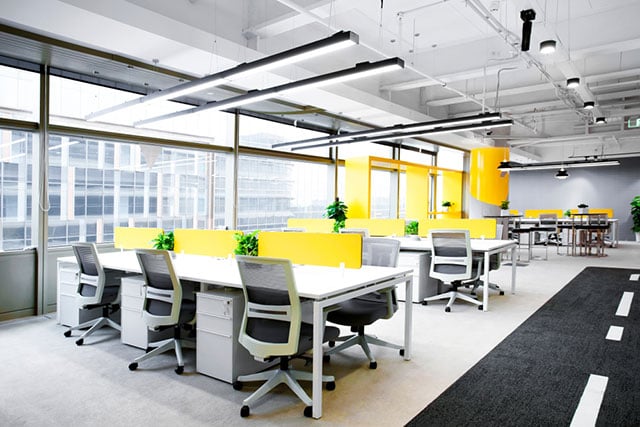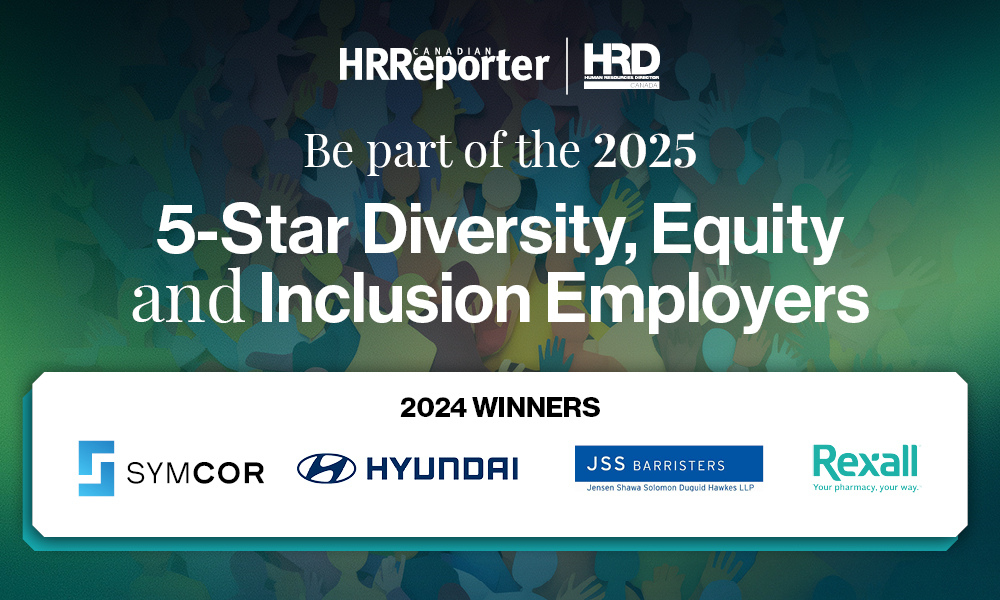But careful planning, balanced design, feedback can all help, say experts

(Note: This article originally appeared in Canadian HR Reporter Weekly, our new digital edition for subscribers. Sign up today to make sure you don't miss future issues: www.hrreporter.com/subscribe.)
Popular wisdom for the past few decades has dictated that open-plan offices encourage greater employee collaboration. However, this concept can result in decreased face-to-face communication between employees, according to research out of Harvard Business School.
Given that many Canadian workplaces operate with an open plan, that’s problematic news — 56 per cent of Canadian HR managers said their companies moved to an open-concept workspace to enhance collaboration, according to a 2017 report by Robert Half.
The Harvard researchers followed two Fortune 500 companies, collecting quantitative data along they way, as they moved from a more traditional office space to an open concept environment.
“In making the change, each organization had a goal to create a more ‘vibrant’ environment where workers from different areas of the business interacted more often,” said Ethan Bernstein, study researcher and associate professor in organizational behaviour at the Harvard Business School in Boston.
“They were hoping there would be more impromptu interaction between employees — more serendipitous, face-to-face ‘collisions’ between individuals — leading to more innovation and greater performance.”
But that’s not what happened. With employees using wearable devices to capture how often they interacted with each other in the new environments, the researchers found staff engaged in an average of 70 per cent less face-to-face communication, with an associated increase in electronic communication.
Instead of prompting increasingly vibrant, face-to-face collaboration, the open architecture appeared to trigger a natural human response to socially withdraw from co-workers and interact instead over email and instant messaging. And that could be problematic, said the study authors, because prior research on media richness suggests that substituting email for face-to-face interaction can lower productivity.
“In theory, we like to imagine open-concept workspaces will create really vibrant interaction between the people within them, but the reality is often quite different,” said Bernstein.
“We put on big headphones to focus. We try to look like we are intently working hard so that those around us — who can now see us all the time — believe we are hard workers.”
As a result, others see an intently focused person wearing headphones and decide not to disturb her with conversation, sending an email instead, he said.
Dealing with noise (and quiet)
Several studies have found noise, and in particular “unwanted speech noise,” can be one of the biggest challenges of open-plan offices. A 2014 study by Steelcase and Ipsos, for example, found that workers lost as much as 86 minutes per day due to noise distractions.
“Our office isn’t really optimized for sound absorption,” said Kira Charron, content marketing manager at Collage HR in Toronto.
The 20-plus team works in an airy, open-concept space that, while flexible and well-suited to their needs in some ways, presents the team with noise challenges.
Some employers handle this challenge by introducing periods of company-wide quiet time.
“Sometimes, they’ll encourage employees to work quietly each morning from, say, 10 am to noon,” said Charron. “Or they might have do-not-disturb Tuesdays or Thursdays so that’s at least one day of the week where there’s a collective agreement for when everyone will do more of the heads-down kind of work without interruption.”
But a lack of sound can also be a problem.
“Silence can be distracting if the open nature of the space causes people to be too quiet,” said Gale Moutrey, vice-president of communications for office furniture and design company Steelcase.
A too-quiet office means everyone will hear your conversations and phone calls. In fact, a 2013 study from the University of Sydney found that a lack of sound privacy was the biggest drain on morale.
In response to both of those issues, some companies choose to pipe in white noise, sound-masking technology, or even nature sounds to make it harder to hear — or overhear — other conversations.
Other organizations encourage employees to use headphones to either listen to their own white noise or music, or to cancel out surrounding distractions. At Collage HR, for example, new employees are given noise-cancelling headphones when they’re onboarded.
“Wearing headphones is a social cue,” said Charron. “If someone is wearing headphones, you generally don’t go up and ask them a question. You save it for later or send them an email instead.”
Employees have struck a balance between wearing headphones, working at home or working in a closed-door office when they need time to focus, and at other times working more closely and collaboratively with their colleagues.
“Occasionally, there’ll be a lively sales conversation or something like that, but it’s just an accepted disturbance once in a while,” she said. “It’s not an everyday situation and no one is really bothered by it.”
Creating spaces for collaboration and privacy
But when balance isn’t struck, and employees wear headphones most of the time, there can be a drop in face-to-face interactions that’s ultimately bad for business, according to the Harvard Business School study.
A more comprehensive solution might be a working environment that’s not 100 per cent open concept, “a range of spaces that compliments the open-plan areas,” said Moutrey.
But not enough employers are providing it: A 2017 survey by MSNBC found 58 per cent of high-performing employees said they need more private spaces for problem-solving, and 54 per cent said they find their office environment “too distracting.”
“We would recommend that the open concept consist of a variety of spaces that also allows users the ability to focus or concentrate without distraction when working alone or working as a team,” said Moutrey.
“Open-office concepts can effectively encourage collaboration and communication, but only when they offer this range of spaces and allow employees choice and control over where they choose to work, depending on what kind of work they are doing.”
Making it work
This isn’t the first piece of research critical of the open -plan workspace, but some studies offer a more positive spin. A 2016 study out of the University of Queensland in Australia, for example, found open-plan offices helped engineering teams work on specific projects better.
Making an open-plan office work depends on careful research and planning, said Bernstein. “When you’re considering a change to a physical work environment, the more you can ask questions about how this will impact human behaviours, the better.”
“Most architects I know would welcome a more thoughtful dialogue on these issues that didn’t start and end with cost per square foot.”
Then, “Ask the people who’ll be working in that space to be painfully honest with you. Find out when they’re at their most productive and look into what environmental factors support that — and that will provide a good base for your design.”
The biggest misstep organizations make is not considering the need for individuals and teams to be free from distraction when required, said Moutrey.
“Privacy isn’t always about four walls and a door, as there are varying degrees of privacy that people seek during the day depending on the work they are doing, and these can be addressed by products designed for that purpose, as well as the overall architecture.”
The most successful designs start by considering the experience from the employees’ perspective.
“The companies we work with are interested in designing for the well-being of their employees — their physical well-being, as well as emotional and cognitive well-being,” said Moutrey.
Employees perform better when they can try out new ideas and approaches within certain zones of privacy, said Bernstein.
“By balancing transparency and privacy, organizations can encourage just the right amount of ‘deviance’ to foster innovative behaviour and boost productivity.”
Melissa Campeau is a Toronto-based freelance writer.




